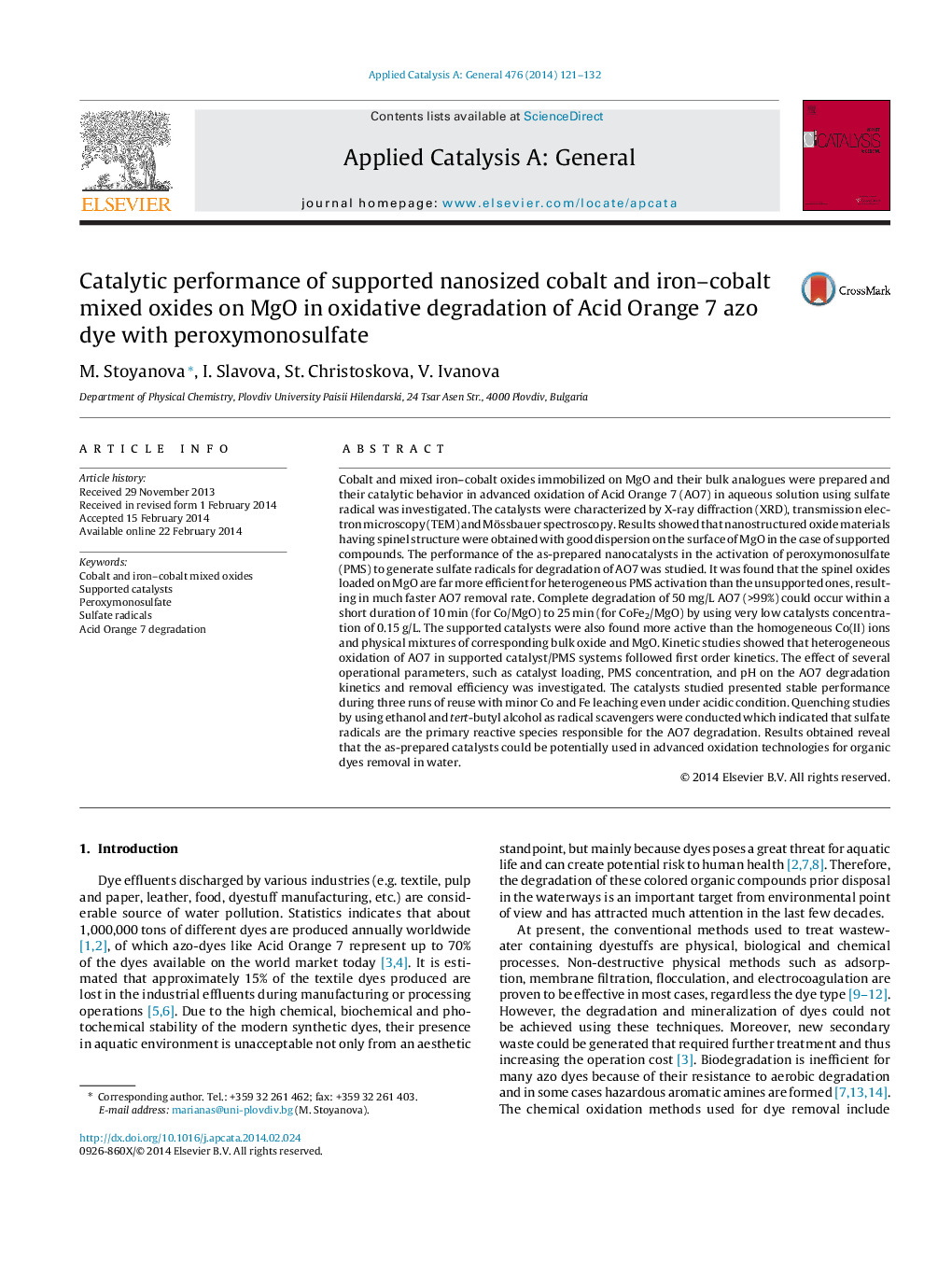| Article ID | Journal | Published Year | Pages | File Type |
|---|---|---|---|---|
| 39772 | Applied Catalysis A: General | 2014 | 12 Pages |
•Co and Fe–Co oxides supported on MgO are efficient catalysts for PMS activation.•The catalysts presented better activity of AO7 degradation than homogeneous system.•Radical quenching studies confirmed sulfate radicals as the major reactive radicals.•Supported catalysts also demonstrate stable performance during the recycling runs.
Cobalt and mixed iron–cobalt oxides immobilized on MgO and their bulk analogues were prepared and their catalytic behavior in advanced oxidation of Acid Orange 7 (AO7) in aqueous solution using sulfate radical was investigated. The catalysts were characterized by X-ray diffraction (XRD), transmission electron microscopy (TEM) and Mössbauer spectroscopy. Results showed that nanostructured oxide materials having spinel structure were obtained with good dispersion on the surface of MgO in the case of supported compounds. The performance of the as-prepared nanocatalysts in the activation of peroxymonosulfate (PMS) to generate sulfate radicals for degradation of AO7 was studied. It was found that the spinel oxides loaded on MgO are far more efficient for heterogeneous PMS activation than the unsupported ones, resulting in much faster AO7 removal rate. Complete degradation of 50 mg/L AO7 (>99%) could occur within a short duration of 10 min (for Co/MgO) to 25 min (for CoFe2/MgO) by using very low catalysts concentration of 0.15 g/L. The supported catalysts were also found more active than the homogeneous Co(II) ions and physical mixtures of corresponding bulk oxide and MgO. Kinetic studies showed that heterogeneous oxidation of AO7 in supported catalyst/PMS systems followed first order kinetics. The effect of several operational parameters, such as catalyst loading, PMS concentration, and pH on the AO7 degradation kinetics and removal efficiency was investigated. The catalysts studied presented stable performance during three runs of reuse with minor Co and Fe leaching even under acidic condition. Quenching studies by using ethanol and tert-butyl alcohol as radical scavengers were conducted which indicated that sulfate radicals are the primary reactive species responsible for the AO7 degradation. Results obtained reveal that the as-prepared catalysts could be potentially used in advanced oxidation technologies for organic dyes removal in water.
Graphical abstractFigure optionsDownload full-size imageDownload high-quality image (94 K)Download as PowerPoint slide
